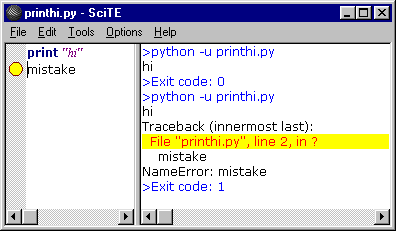Purebasic Serial Port Example
PureBasic examples for the Windows UD library. The Windows UD library is the high-level Windows library/driver for the LabJack U3, U6 and UE9. So an example is given by Purebasic team. Do would maybe be to write you own library in Purebasic that communicates via the serial port?
I would rather attempt something great and fail, than attempt nothing and succeed - Fortune Cookie 'The critical shortage here is not stuff, but time.' - Johan Ekdahl 'If you want a career with a known path - become an undertaker.
Dead people don't sue!' - Kartman 'Why is there a 'Highway to Hell' and only a 'Stairway to Heaven'?
A prediction of the expected traffic load?' - Lee 'theusch' Speak sweetly.
It makes your words easier to digest when at a later date you have to eat them;-) - Source Unknown Please Read: Atmel Studio6.2/AS7, DipTrace, Quartus, MPLAB user. Are you using the data from the Arduino to control a program or process on the PC? Is this a commercial or home-brew program on the PC? Or - are you sending data from the PC that the user is entering/typing while the programs (on both the PC and the AVR) are running? Generally to write a program on the PC that interacts with data received from an external AVR requires a programming language tool on the PC.
Often this is Visual BASIC or Visual C. Use these programs to determine the number of USB COM ports that the PC can detect and what their ID numbers are. Assign your VB or VC application to process data received from the user-selected COM port. Statistica program. Then use a USB-serial interface to physically make the COM connection between the PC and Arduino. In the.ino file used by the Arduino program/sketch, use Serial.read() and Serial.write() to exchange data with the PC.
If the user is typing data from the PC to the Arduino, just use a terminal program on the PC side, or the Arduino Serial Monitor. Wrote: Is there any tutorial on how to do something like this?Somewhat; the following is for Arduino and Universal Windows Platform (UWP, Windows 10 PC and phone, Windows Server 2016) (Arduino IDE, Visual Studio 2015): Shows how to use the APIs to communicate with an Arduino device. This sample allows the user to configure and communicate with an Arduino board that has simple wired circuitry consisting of 4 LEDs and a temperature sensor.
Magnet:?xt=urn:btih:19c9216d94c442acb8679a7471a1b1&dn=dinamicheskaya_oblojka_dlya_grupp_545-dfb___.exe 复制磁力链接到迅雷、115、utorrent. I mean March 2016| The Radio Theatre Project| Live Radio Theatre at The Studio@620 is a little vanilla. You might glance at Yahoo’s home page and see how they create post titles to get people to click. You might add a video or a picture or two to grab people excited about what you’ve written. Jonn3 さん 2012年 10月 26日 02時 56分 18秒. Je-pu-pu アクセス解析 je-pu-pu.jp 統計期間: 9 2013 - リンク元 作成日時 01-Oct-2013 04:48 JST. » s 0 X Digital Green1: X 1999 by Clamp 'Digital Green' Date: 28 August 2002 [For Winamp 2] Green, bright green, dark green, green. I was in a 'greenish mood' and the picture of Satsuki with her Beast caught my attention. Skini dlya winamp v vide magnitofona 1.

Via Microsoft Windows USB Core Team Blog What is new with Serial in Windows 10 by George Roussos (Microsoft) July 29, 2015. A Windows Runtime API for communication with Serial devices. Windows 10 SDK includes two Universal SDK samples illustrating this API: • SDK Sample • New SDK Sample from above //build talk is now available including C# and Arduino sketch source code. Microsoft Windows Intro to the Universal Windows Platform. We're so spoiled for choice these days. 'Firmata' seems to be popular although I've not used it.
For most of my industrial instrumentation designs, I used Modbus. Having 'rolled my own' stuff for many years, it does make sense to use a protocol that is known a documented - this usually means there are existing tools to test with. One protocol I used for my garage lighting control was 'OSC' - open sound system control. There was a free app on the iPhone that was customisable so i could have buttons and sliders.
This worked well. It works over UDP, so I used a enc28j60 ethernet interface and hacked the tuxgraphics ethernet stack to do UDP. This was done an a mega162 at 8MHz. I used ethernet as the light dimming code took most of the cpu time, so serial comms at any reasonable speed was a problem - the enc28 chip has 8k of buffer, so that solved the problem.
If you know C++, I also recommend Qt. There is a fully featured free community edition available, but this requires you to comply to LGPL v3 when distributing the software. Qt is really easy to use once you understood how the creators think. You can easily click together a GUI and then program it to do stuff. The main advantage here is that it features an abstraction layer for the serial port, this even makes it multi platform!